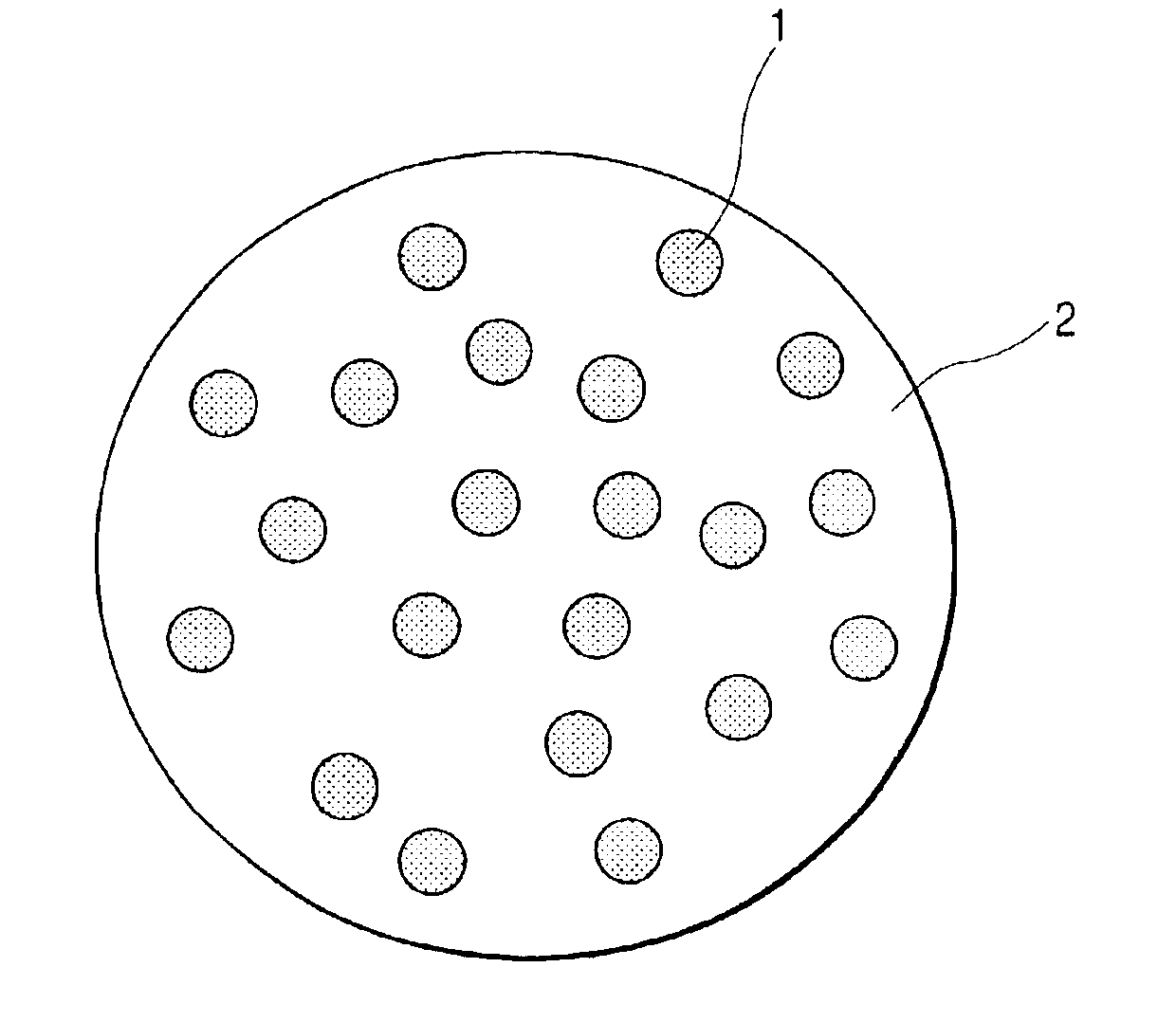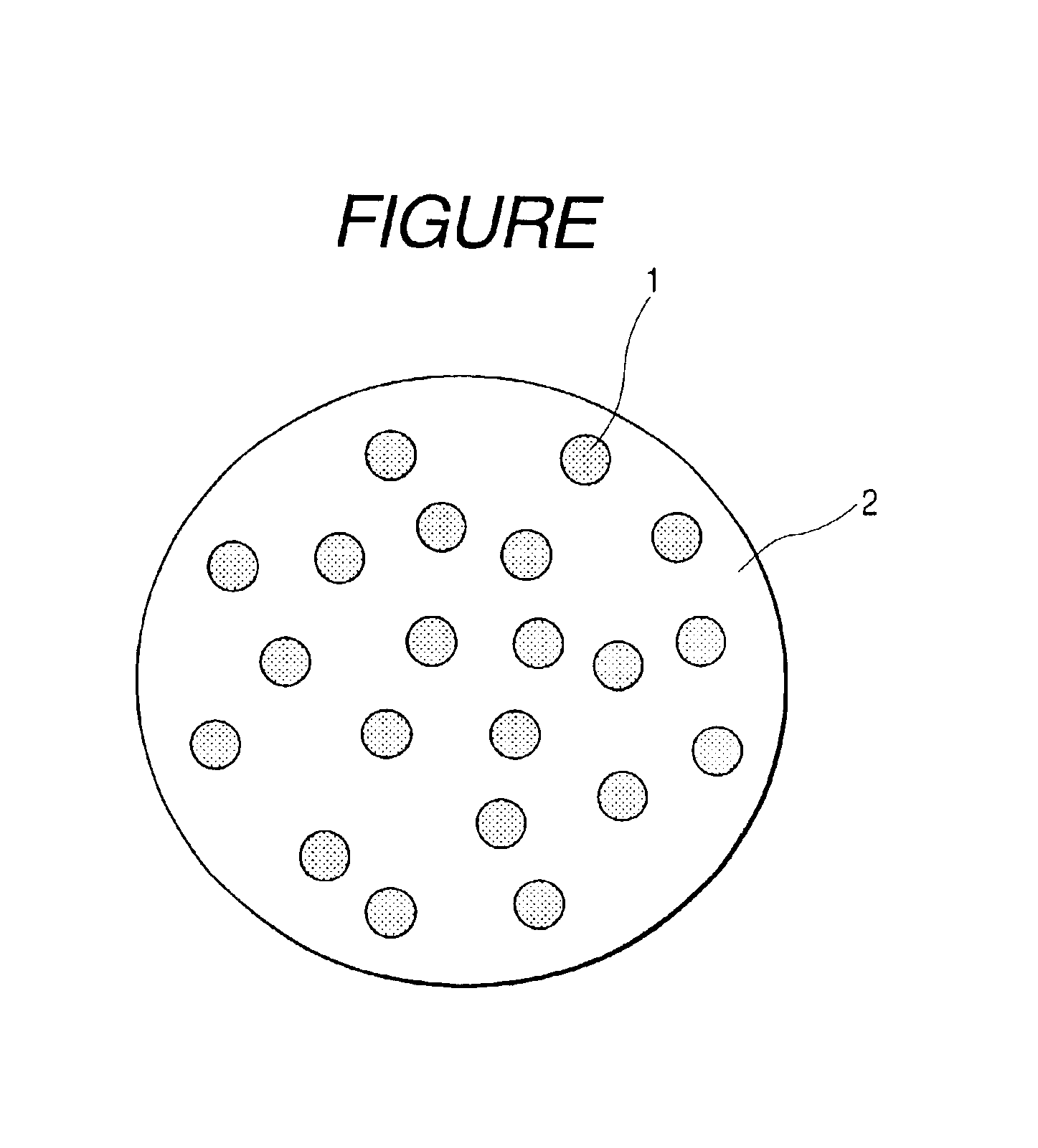Aqueous dispersion of water-insoluble-colorant-containing particle and preparation process thereof, water-insoluble-colorant-containing particle and preparation process thereof, and ink
- Summary
- Abstract
- Description
- Claims
- Application Information
AI Technical Summary
Benefits of technology
Problems solved by technology
Method used
Image
Examples
first embodiment
(First Embodiment)
[0030]The first step in the preparation process of the aqueous dispersion according to the first embodiment of the present invention is a step of dissolving an organic pigment in a non-protic organic solvent to prepare a pigment solution, and the second step is a step of reproducing pigment-containing particles having an even particle diameter in the form of an aqueous dispersion.
[0031]As the organic pigment used in the present invention, any pigment may be used so far as it is soluble in the non-protic organic solvent in the presence of an alkali and can achieve the objects of the present invention. It more preferably does not have reactivity under such conditions and is stable. More specifically, organic pigments used in printing inks, paints or the like may be used. Examples of the organic pigments include insoluble azo, disazo, condensed azo, anthraquinone, dianthraquinone, anthrapyridine, anthanthrone, thioindigo, naphthol, benzoimidazolone, pyranthrone, phtha...
second embodiment
(Second Embodiment)
[0055]The process according to the second embodiment can be performed in the same manner as in the first and second steps of the preparation process according to the first embodiment except that a polymerizable compound is contained in the pigment solution. The polymerizable compound in the resulting pigment-containing particles is polymerized, whereby the pigment in the pigment-containing particles is fixed. By this fixing, the pigment-containing particles can be effectively prevented from being destroyed or losing the dispersibility even when various substances, for example, a surfactant and the like are added to the aqueous medium for the purpose of, for example, adjusting the physical properties of an ink. Incidentally, the polymerizable compound itself may not have dispersibility so far as pigment-containing particle having desired dispersibility is provided by its combined use with the dispersing agent, but the polymerizable compound with a dispersing abilit...
third embodiment
(Third Embodiment)
[0073]The pigment-containing particle obtained by the process according to the third embodiment has such a structure that at least parts of surfaces thereof are coated with a polymer of an ethylenically unsaturated compound. A process according to the third embodiment as a preparation process of such pigment-containing particle can be performed in the same manner as in the first and second steps of the preparation process according to the first embodiment except that a reactive emulsifier is used as the dispersing agent in addition to the surfactant and polymeric compound.
[0074]For the thus-obtained aqueous dispersion of the pigment-containing particle, at least parts of the surfaces of the pigment-containing particles are coated with the polymer of the ethylenically unsaturated compound in the third step. As the surfactant and polymeric compound as the dispersing agent in the process according to the third embodiment, those mentioned in the process according to th...
PUM
| Property | Measurement | Unit |
|---|---|---|
| Percent by mass | aaaaa | aaaaa |
| Nanoscale particle size | aaaaa | aaaaa |
| Particle diameter | aaaaa | aaaaa |
Abstract
Description
Claims
Application Information
 Login to View More
Login to View More - R&D
- Intellectual Property
- Life Sciences
- Materials
- Tech Scout
- Unparalleled Data Quality
- Higher Quality Content
- 60% Fewer Hallucinations
Browse by: Latest US Patents, China's latest patents, Technical Efficacy Thesaurus, Application Domain, Technology Topic, Popular Technical Reports.
© 2025 PatSnap. All rights reserved.Legal|Privacy policy|Modern Slavery Act Transparency Statement|Sitemap|About US| Contact US: help@patsnap.com


